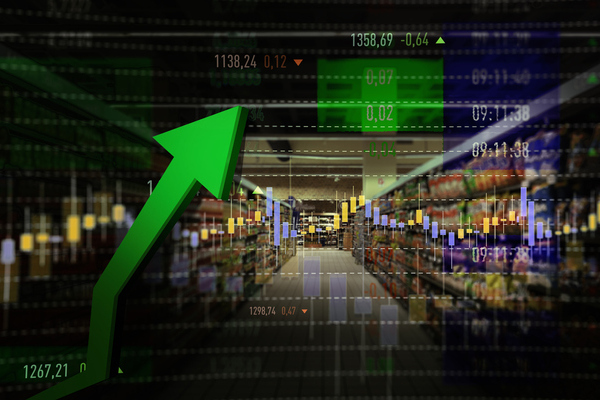Advanced analytics for resilient supply chains: balancing flexibility and vulnerability
Sponsored by Alteryx
To mitigate risk, some organisations are shortening their supply chains by choosing near-shore partnerships. Although these may be more expensive, they are less affected by international shipping disruptions. Others use a dual-sourcing strategy to ensure their materials or products are available if one partner fails. These and other strategies like them have their strengths and weaknesses.
Leaders must select an approach that strikes the right balance between flexibility, efficiency and vulnerability. Advanced analytics can assist organisations in navigating these uncertain times by helping them create a data-driven strategy that mitigates risk for each unique supply chain.
Defining the correct risk-mitigation strategy for your organisation
The right risk-mitigation strategy will vary depending on your organisation’s needs and circumstances. However, some general principles can be applied. For example:
- Innovative offerings rely on a supply chain that provides fast time to market, which means supply disruptions, shipping delays, and material shortages are a significant risk
- Customer experience-focused organisations must respond quickly to demand, so they face the risk of rapidly changing consumer expectations and demand volatility
- High-performance products require strict quality control and production excellence, which can be affected by rising costs for in-demand components and materials
- Affordable products or services are only possible through efficient, low-cost procurement and production, which often rely on far-shore industrial partners in developing regions
Effective management of business risks requires a customised approach, as every organisation’s supply chain and risk profile differ. Advanced analytics can provide the visibility and in-depth assessment organisations need to understand their supply chains, map out critical dependencies and vulnerabilities and continuously improve their risk-mitigation strategies.
Analytics as a differentiator: predictive and prescriptive
Supply chains benefit most from two types of advanced analytics: predictive and prescriptive. Predictive analytics gives leaders a realistic picture of the future of their supply chain by identifying potential risks and their likely impact. In contrast, prescriptive analytics help guide decision-making to mitigate risks and improve KPIs such as productivity and profitability.
The following use cases highlight how advanced analytics can help leaders alleviate the effects of disruption and unexpected events within their supply chains.
Many organisations don’t realise the key to understanding their supply chain in granular detail is already available. Their various departments and teams hold vast amounts of data that can provide broader and deeper visibility of the distribution network and what makes it tick.
However, organisations must resolve any data quality issues before transforming data, and blending multiple datasets is necessary to produce a single source of truth. Automated workflows in Alteryx can transform and blend data, providing accurate insights for dashboarding and analytics. With the right data insights, organisations can optimise inventory levels, improve customer experience, and increase efficiency.
Demand forecasting
Businesses can mitigate the risks of overspending, production delays and dissatisfied customers by accurately forecasting demand. Many organisations rely on historical data to plot expected demand levels. However, relying solely on historical data is no longer sufficient in an unstable global environment.
The advanced analytics capabilities in Alteryx enable data extraction from multiple sources, including unstructured data, to predict customer behaviour and model various scenarios. This helps organisations understand how other risk factors might affect demand and whether the existing network can support it. It also empowers supply chain leaders to cater to demand while retaining the flexibility to pre-empt and address disruptive events.
Inventory optimisation
Maintaining the correct inventory levels is a key concern throughout the supply chain. Analytics can help companies reduce costs by optimising transportation and storage. Here are some specific examples of how Alteryx can be used to optimise inventory levels:
- Identifying trends: identify trends in demand, such as seasonal variations or product lifecycles, to optimise inventory levels and avoid stockouts or overstocks
- Optimising transportation: optimise transportation routes and schedules to reduce transportation costs and improve delivery times
- Optimising storage: improve warehouse space and inventory layout to reduce storage costs and improve inventory turnover
By charting current and potential roadblocks for the organisation, leaders can adjust their strategy to avoid waste, delays, overbuying and discounting.
Predictive maintenance
When production stops, orders pile up and materials accumulate in the warehouse. Determining when to shut down the production line to repair and replace components can be challenging, especially when different machine parts wear out at varying rates.
Alteryx allows production managers to monitor equipment health and performance by analysing data from the machines’ internal diagnostics, internet of things sensors, quality control reports and more. This allows organisations to schedule maintenance before a failure occurs, which can prevent costly downtime and disruptions to the supply chain.
Build a calculated supply chain strategy
Risk constantly changes with new disruptors, evolving business needs and complex supply chains. Incorporating advanced analytics into your risk-mitigation strategy can help you build a resilient supply chain and improve its ability to withstand disruptions while driving efficiency in the cost to serve.
To learn more about how Alteryx can help you build a resilient supply chain, watch the upcoming SupplyChainTalk episode, How Analytics can Empower your Future Supply Chain, and visit alteryx.com.

Business Reporter Team
Most Viewed
23-29 Hendon Lane, London, N3 1RT
23-29 Hendon Lane, London, N3 1RT
020 8349 4363
© 2024, Lyonsdown Limited. Business Reporter® is a registered trademark of Lyonsdown Ltd. VAT registration number: 830519543
Join the Business Reporter community today and get access to all our newsletters, and our full library of talk show episodes
Join the Business Reporter community today and get access to all our newsletters, and our full library of talk show episodes





